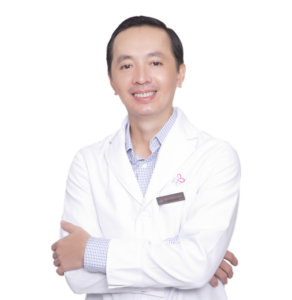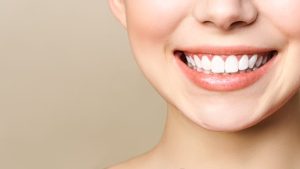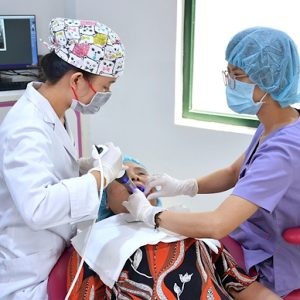Table of content
Full-mouth tooth loss causes numerous issues, such as severe impairment of chewing function, jawbone resorption, and making the person appear older than their actual age. However, with advancements in science and technology, there are now many methods available for restoring full-mouth tooth loss, helping patients effectively address these issues.
1. Reasons for Full-Mouth Tooth Loss
Common reasons for full-mouth tooth loss include:
1.1. Chronic Periodontitis
Periodontitis (gum disease) is an infection of the tissues surrounding the teeth (gums, enamel, ligaments, and bone). In this condition, the gums lose attachment to the teeth, the tooth sockets experience bone resorption, and periodontal pockets form, causing the teeth to become loose and eventually be lost.
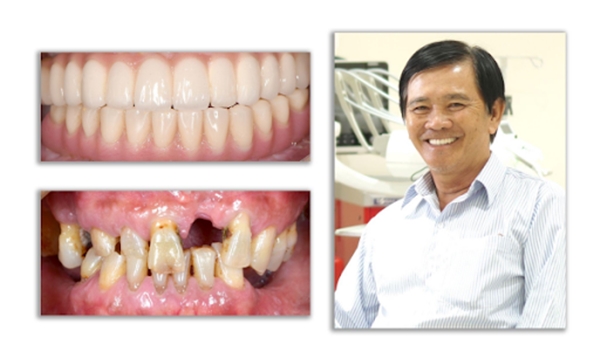
1.2. Tooth Decay and Apical Infection
One of the leading causes of tooth decay is poor oral hygiene over an extended period. Plaque and food debris accumulate on the teeth, providing an environment for bacteria to thrive and proliferate. This leads to enamel erosion and eventually progresses to the dental pulp, disrupting the entire structure of the tooth.
1.3. Trauma to the Head, Face, or Neck
Trauma to the head, face, or neck can cause physical damage to the teeth, gums, tooth sockets (the bone that supports the teeth), or the soft tissues of the mouth, including the lips and tongue. Damage to the teeth can range from minor: chipping of the outer layers (enamel and dentin) to severe: vertical, diagonal, or horizontal fractures of the tooth or complete root fractures, leading to tooth loss.
1.4. Age
Similar to other body parts, teeth also age over time. Additionally, due to their structure and nature resembling bone, conditions such as osteoporosis and calcium deficiency in older adults are factors that make them more susceptible to tooth loss.
2. Negative Effects of Full-Mouth Tooth Loss
Full-mouth tooth loss has numerous negative consequences, such as:
2.1. Severe Reduction in Chewing Function
Effective biting, tearing, and grinding of food requires coordination between the upper and lower jaws. Therefore, if one or both sets of molars are lost, chewing function will be severely impaired, making it difficult to adequately break down food.
Reference: What causes molar tooth loss? How to fix it?
2.2. Increased Risk of Digestive System Disorders
The mouth is the entry point of the digestive system, responsible for breaking down food to facilitate digestion. When chewing function is severely reduced due to full-mouth tooth loss, other parts of the digestive system must work harder. Consequently, the digestive system can suffer serious harm, leading to various conditions such as constipation, stomach ulcers, and intestinal perforation.
2.3. Jawbone Resorption
Jawbone resorption (bone loss around the tooth sockets) describes the reduction in density, height, and volume of the bone surrounding the tooth roots. This condition is commonly seen in individuals who have experienced long-term tooth loss.
Learn more: > How long after tooth loss does jawbone resorption occur? > Can you get dental implants with jawbone resorption?
How Does Jawbone Resorption Progress Over the Years?
The process of chewing applies force to the tooth roots, stimulating the bone tissue and maintaining jawbone density over the years. When a tooth is lost, the force on the jawbone ceases, leading to the following resorption process:
- In the first 12 months after tooth loss, approximately 25% of the jawbone at the site of the lost tooth will be resorbed.
- After about 3 years, the jawbone will experience resorption of up to 45–60%.
- Over time, the degree of bone resorption will continue to worsen and become more severe.
In patients with full-mouth tooth loss, jawbone resorption causes numerous negative effects:
- It leads to gum shrinkage, causing the cheeks to sink in and the facial skin to become hollow, making the patient appear older than their actual age.
- It causes the teeth in the opposite jaw to shift and become misaligned, affecting aesthetics.
- It creates obstacles for performing tooth restoration methods.

2.4. Impaired Pronunciation
The incisors (teeth numbers 1 and 2) play a crucial role in clear and precise pronunciation. When a patient experiences full-mouth tooth loss, accurate pronunciation becomes more challenging, leading to the development of a speech impediment over time.
2.5. Other Consequences
In addition to the above consequences, full-mouth tooth loss also leads to severe impacts on health, as the patient cannot enjoy their favorite foods. This results in physical weakness and increasing mental fatigue, making it difficult for the patient to concentrate on work.
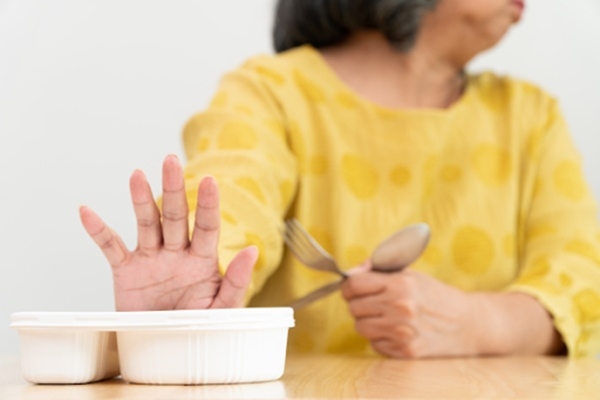

Additionally, in the long term, patients with full-mouth tooth loss may face various issues such as headaches , neck, shoulder pain…
3. Summary of 3 Solutions for Full-Mouth Tooth Loss
There are three common methods for restoring full-mouth tooth loss:
3.1. Classic Removable Dentures
Full-mouth removable dentures consist of two parts: the artificial teeth and the denture base designed to resemble the natural gums. This is the most common and cost-effective tooth restoration method available today.

Advantages of Classic Removable Dentures
- Easy to remove and clean.
- Short waiting time for receiving dentures, typically completed in about 1 week.
- Moderate cost, approximately 15 million VND per denture.
- No requirement for the patient to have good jawbone density.
Disadvantages
- Low aesthetic value.
- Rapid jawbone resorption due to pressure from the dentures.
- Reduced taste sensation because food does not come into contact with the oral mucosa.
- Loose and prone to falling out during eating and speaking, causing significant disruption to daily activities.
- Suitable only for the upper jaw due to poor load-bearing capacity.
3.2. Implant-Supported Overdentures
To address the issue of looseness in removable dentures, implant-supported overdentures have been developed. This method uses attachments connected to implants to secure the dentures more firmly on the jawbone. There are two common types of attachments:
- Ball Attachments: Each implant in the jawbone is fitted with a ball-shaped attachment that matches a socket on the denture.
- Bar Attachments: The denture is tightly secured onto a metal bar (attached to 2-5 implants) and held in place by clips.

Advantages of Implant-Supported Overdentures
- Easy to remove and clean.
- More aesthetic compared to classic removable dentures due to the use of more artificial gum.
- Increases the stability of removable dentures, thereby improving chewing function.
- Suitable for patients with significant bone resorption or those who are very elderly.
Disadvantages
- Reduces taste sensation because the base of the denture obstructs contact with the oral mucosa.
- Requires regular inspection and replacement of attachments (approximately every 6 months).
- Higher cost if multiple implants are needed.
3.3. ProArch/All-on-X Full Arch Restoration
One of the most advanced and modern techniques today is implant placement and fixed restoration on implants. These restorations are supported by implant posts, which act as artificial tooth roots and require care similar to natural teeth (such as brushing and daily flossing). Due to technological advancements, full arch restorations now require only 4-6 implants instead of the previous 8-12 implants.
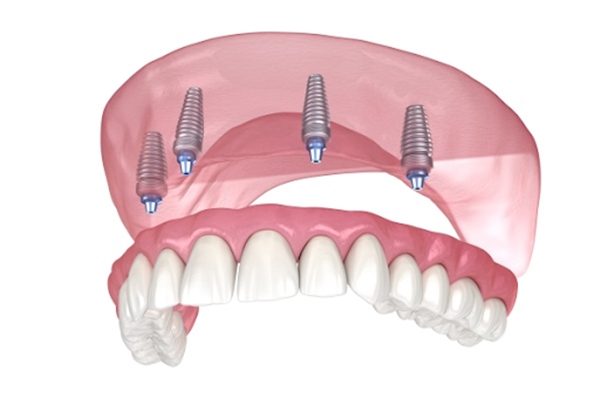
Advantages of ProArch/All-on-X
- Natural and refined appearance of the completed teeth.
- Temporary teeth provided on the same day for immediate use.
- Replaces removable dentures, restoring freedom in eating and speaking.
- Minimizes complex invasive surgical steps, such as sinus lifts or bone grafts, if the restoration is performed soon after tooth loss.
Disadvantages
- High cost, dependent on the brand of implants and the complexity of the final product.
Additional information: > Should you get dental implants? Answering frequently asked questions > How long does an implant procedure take to complete?
4. Cost of Full Arch Restoration
Below is the latest price list for full arch restoration using the ProArch/All-on-X method at Elite Dental:
| IMPLANT ALL-ON-X/PROARCH | TYPE OF IMPLANT | PRICE (VND) |
| Implant All on 4 | Implant Megagen (Korea) | 190.000.000 – 220.000.000 |
| Implant Hahn (America) Implant Neodent (Switzerland) | 210.000.000 – 250.000.000 | |
| Implant Straumann (Switzerland) | 230.000.000 – 270.000.000 | |
| Implant All on 6 | Implant Megagen (Korea) | 230.000.000 – 270.000.000 |
| Implant Hahn (Mỹ) Implant Neodent (Switzerland) | 250.000.000 – 300.000.000 | |
| Implant Straumann (Switzerland) | 280.000.000 – 330.000.000 | |
| Implant All on 8 | Implant Megagen (Korea) | 280.000.000 – 330.000.000 |
| Implant Hahn (America) Implant Neodent (Switzerland) | 310.000.000 – 370.000.000 | |
| Implant Straumann (Switzerland) | 335.000.000 – 400.000.000 |
(*) Note: The cost includes implant placement surgery and the final dental bridge with a titanium framework (CAD/CAM) and composite teeth.
Don't miss: Detailed cost of dental implants - Latest price list!
5. Full Mouth Implant Cases at Elite Dental
To achieve the best results for tooth restoration and minimize swelling and pain during the implant process, choosing a high-quality, reputable implant dental clinic is crucial.
When undergoing full mouth implants at Elite Dental, you can be assured of:
- Elite Dental is the first representative of Vietnam and the second center in Southeast Asia to become a “Specialized Implant Training Center” recognized by Straumann, a leading implant group.
- The implant surgery is performed by a doctor with over 15 years of practical experience and doctoral degrees from France and Japan. In 2020, Dr. Tran Hung Lam had an outstanding case selected for publication in the “Asian-Pacific Implant Clinical Case Compilation.”
- Achieving a success rate of up to 99.8% in full mouth restoration treatments, as recognized by Straumann, the world’s leading implant group.
- Top-notch equipment and facilities specialized for implant surgeries, such as Anthor surgical chairs from Italy with advanced sterilization systems; Piezo machines to reduce trauma during surgery; and PRP technology with laser and centrifuge machines to speed up healing.
A beautiful smile radiates confidence and comfort. So, don’t hesitate to contact Elite Dental today to get advice on the most suitable solution for full mouth restoration.
Related posts: > Full mouth dental implants: Definition, cost and procedure > Does implant surgery hurt? What factors influence this? > Are dental implants dangerous?

